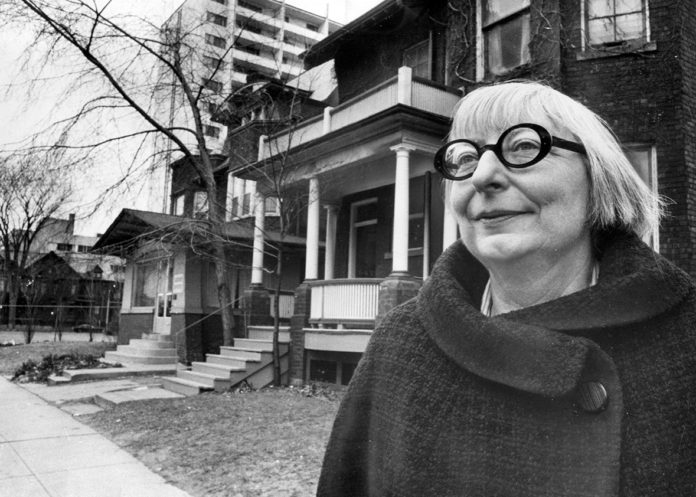Jane Jacobs (1916-2006) was an urban writer and activist who championed new, community-based approaches to planning for over 40 years. Her 1961 treatise, The Death and Life of Great American Cities, became one of the most influential American texts about the inner workings and failings of cities, inspiring generations of urban planners and activists. Her efforts to stop downtown expressways and protect local neighborhoods invigorated community-based urban activism and helped end Parks Commissioner Robert Moses’s reign of power in New York City.
Jacobs had no professional training in the field of city planning, nor did she hold the title of planner. Instead, she relied on her observations and common sense to show why certain places work, and what can be done to improve those that do not. Together with PPS mentor William H. Whyte, Jacobs led the way in advocating for a place-based, community-centered approach to urban planning, decades before such approaches were considered sensible. William “Holly” Whyte was her editor at Fortune Magazine, who published her seminal article “Downtown is for People” (1958)–the piece that inspired the Rockefeller Foundation to fund her to write The Death and Life of Great American Cities.
Jacobs was born in 1916 in the coal mining town of Scranton, Pennsylvania, the daughter of a doctor and a former school teacher and nurse. After graduating from high school, she took an unpaid position as the assistant to the women’s page editor at the Scranton Tribune. A year later, in the middle of the Depression, she left Scranton for New York City. During her first several years in the city she held a variety of jobs, working mainly as a stenographer and freelance writer, often writing about working districts in the city. These experiences, she explains, “gave me more of a notion of what was going on in the city and what business was like, what work was like.”
While working for the Office of War Information she met her husband, architect Robert Jacobs. In 1952 Jacobs became associate editor of Architectural Forum, allowing her to more closely observe the mechanisms of city planning and urban renewal. In the process, she became increasingly critical of conventional planning theory and practice, observing that many of the city rebuilding projects she wrote about were not safe, interesting, alive, or economically sound. She gave a speech on this issue at Harvard in 1956, and William H. Whyte invited her to write a corresponding article in Fortune magazine, titled “Downtown is for People.” In 1961 she presented these observations and her own prescriptions in the landmark book The Death and Life of Great American Cities, challenging the dominant establishment of modernist professional planning and asserting the wisdom of empirical observation and community intuition.
During the 1960s Jacobs also became involved in urban activism, spearheading local efforts to oppose the top-down neighborhood clearing and highway building championed by New York City Parks Commissioner Robert Moses. In 1962 she became the chairman of the Joint Committee to Stop the Lower Manhattan Expressway, in reaction to Moses’ plans to build a highway through Manhattan’s Washington Square Park and West Village. Her efforts to stop the expressway led to her arrest during a demonstration in 1968, and the campaign is often considered to be one of the turning points in the development of New York City. Moses had previously pushed through the Cross-Bronx Expressway and other motorways despite neighborhood opposition, and the defeat of the Lower Manhattan Expressway was an important victory for local community interests and an instigator of Moses’s fall from power. Jacobs’ harsh criticism of “slum-clearing” and high-rise housing projects was also instrumental in discrediting these once universally supported planning practices.
In 1968 Jacobs moved with her family to Toronto, in opposition to the Vietnam War. In Toronto, she remained an outspoken critic of top-down city planning. In the early 1970s she helped lead the Stop Spadina Campaign, to prevent the construction of a major highway through some of Toronto’s liveliest neighborhoods. She also advocated for greater autonomy of the City of Toronto, criticized the bloated electric company Ontario Hydro, supported broad revisions in Toronto’s Official Plan and other planning policies, and opposed expansion of the Toronto Island Airport. After publishing The Death and Life of Great American Cities, her interests and writings broadened, encompassing more discussion of economics, morals, and social relations. Her subsequent books include The Economy of Cities (1969); The Question of Separatism (1980); Cities and the Wealth of Nations (1984); Systems of Survival (1993); and most recently The Nature of Economies (2000). She became a Canadian citizen in 1974 and lived in Toronto until her death on April 25th, 2006.















